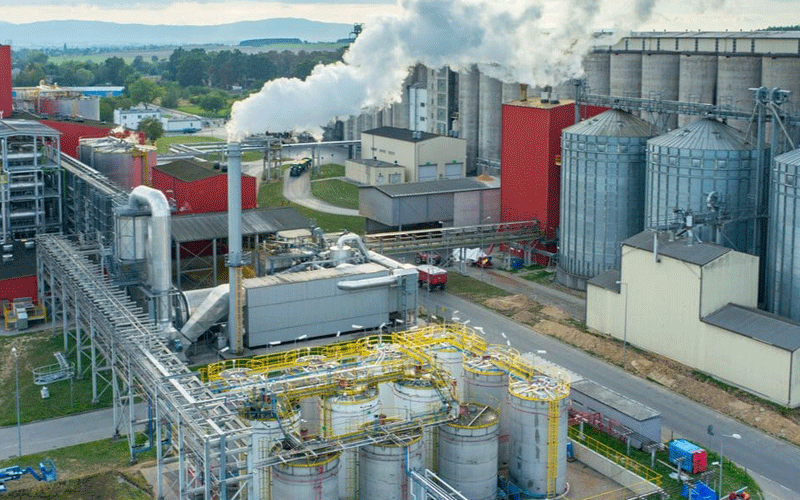Cement industry on strong footing despite pandemic

Dealers are foreseeing double demand in cement prices once infrastructure-related construction gains momentum, positioning the sector as a key indicator of the region’s post-Covid 19 economic recovery.
Harriet James @harriet86jim
The last few years have been difficult for cement companies. The reasons are varied, including stalled real estate projects due to and higher power costs and the government’s decision to implement legislation that imposed controls on lending rates by banks.
But things seem to be looking up. A continental agreement of which Kenya is a signatory has revived hope that there will be increased uptake of cement consumption besides factors, such as infrastructure development and housing demand.
A leading cement company in Kenya is foreseeing an increase in cement consumption from the current 150 kilogrammes to 300 kilogrammes per head in Kenya on the back of the African Continental Free Trade Agreement (AfCFTA), which has so far been ratified by 30 countries on the continent.
Bamburi Cement CEO Seddiq Hassani said the doubling in consumption will bring Kenya’s cement uptake in line with North African countries, while further expressing optimism that cement consumption in the country is set to triple over the next 15-20 years.
Hassani said Kenya will need cement to take advantage of opportunities arising from the AfCFTA due to the expected surge in demand for exports, which will create a spike in infrastructural demand.
“There’s a strong willingness now to develop infrastructure,” Hassani told a continental new outlet Africa Report, noting that the long-term demand for cement in the country has not been affected much by the Covid-19 pandemic.
Promising future
According to the Kenya Bureau of Statistics, cement consumption in the country grew by 11 per cent during the first eight months of the year.
Cement consumption is also expected to rise based on the huge gap in housing (two million units), which is yet to be filled.
Kenya’s prospects have continued to entice new clients and entrants to cement market despite challenges.
For instance in October, former shoe retailer Nairobi Business Ventures revealed plans to build an integrated cement plant with capacity of Sh1 million tonnes per year.
Rwandan cement importers last month turned their search for cement into the Kenyan market to plug a deficit linked to import bottlenecks in Tanzania and so far Bamburi, Simba and Savanna cement companies are replacing the Tananzian brands.
Further, the embattled East African Portland Cement Company (EAPCC) board has approved a Sh25 billion recovery plan for the cash strapped cement maker, and are hoping to revive the company’s operations in the next three years.
The third largest cement manufacturer’s woes are compounded by decades-long court cases the firm says are instigated by private developers eyeing the firm’s Sh17 billion prime land.
Last week, the company declared its intentions to start “recovery proceedings” of part of the land, which allegedly has been unlawfully invaded by China Road and Bridges Corporation (CRBC) for extraction of building materials to build the Nairobi Expressway toll road.
Athi River Mining, the country’s second-largest cement producer by market share is similarly navigating financial and management turmoil.
The company is also fighting a gruelling court battle with prospective liquidators looking to sell off the family-owned business to repay debts.
The African Union have been meeting since Wednesday to discuss the launch of a payment system for the AfCFTA before tomorrow’s (December 5)planned deadline on the ratification of the agreement. The agreement goes into effect from the 1st of January 2021.
Launched 2012, the AfCFTA is a project of the African Union (AU), which was created to facilitate intra-African trade.
One of its objectives is to attain transformation through implementing existing continental initiatives such as the Industrial Development Africa, Programme for Infrastructural Development of Africa, Action Plan for Boosting Intra-African Trade and the Comprehensive Africa Agriculture Development Programme.
“More companies will invest in the cement industry, leading to competition, which will in turn lower the product prices,” says Moses Mbugua Maina, CEO of Gatere Builders.
For instance, presently, due to the introduction of other brands in the market, the price of cement is lower agoing for an average of Sh560 to Sh580 down from Sh600 to Sh650 previously irrespective of recurring inflation.
“A monopolistic market is a very unhealthy system so the more brands of cement we have in the industry the better,” adds Mbugua.
Trade policies
The AfCFTA recognises existing trade agreements, making it possible for them to complement the AfCFTA rather than compete with it.
Such acts include, the African Growth and Opportunity Act, Economic Partnership Agreements, and agreements with the World Trade Organisation (WTO).
However, the existing trade policies have failed to offer the impetus required for industrialisation and economic development to take off in Africa.
Historical cement demand growth was interrupted by the introduction of cap rates whose effect was counterproductive to many industries as lenders took caution.
But this was resolved late last year with the repeal of the cap rate law, thus the current strong demand. Players say, consumption has reverted to pre-Covid-19 levels.
On the flipside, some experts do not think that the agreement will be the solution to the cement industry.
According to Geoffrey Nyandega, an Engineering Manager in a cement company and the vice chair, young engineers’ chapter, such arrangements result in an increase in unhealthy competition among the different brands of cement in countries.
“When it comes to power, some countries enjoy cheap energy tariffs, which will affect tremendously the cost of production,” he cited, “In Kenya, tariff paid on average is US$0.14 (Sh15) per kilowatt hour while in Ethiopia pays US$0.02 dollars (Sh2) per kilowatt hour,” he added.
The support for the AfCFTA by African countries since its launch and particularly since negotiations began in 2015 is overwhelming, with only Eritrea still to sign.
Nigeria, the continent’s biggest economy, was initially reluctant, fearing that the country would be flooded by cheap imports, but it eventually signed.
Another challenge is that even as there is much enthusiasm on AfCFTA, the continent has never been short of economic and policy documents.
The African trade and investment policy landscape is littered with failed grand plans and ambitious policies that have not succeeded in bringing about much-needed trade.
Hence experts hope that this agreement will not just be in word, but in deed.















